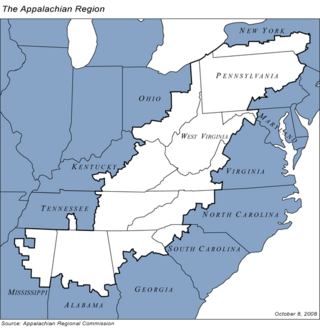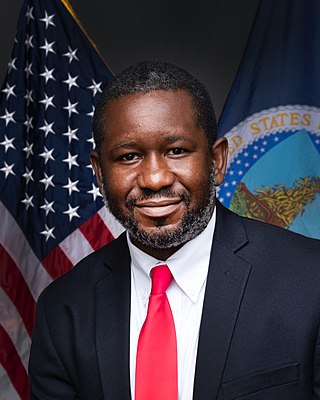
The United States had an official estimated resident population of 333,287,557 on July 1, 2022, according to the U.S. Census Bureau. This figure includes the 50 states and the District of Columbia but excludes the population of five unincorporated U.S. territories as well as several minor island possessions. The United States is the third most populous country in the world. The Census Bureau showed a population increase of 0.4% for the twelve-month period ending in July 2022, below the world average annual rate of 0.9%. The total fertility rate in the United States estimated for 2022 is 1.665 children per woman, which is below the replacement fertility rate of approximately 2.1.
Health equity arises from access to the social determinants of health, specifically from wealth, power and prestige. Individuals who have consistently been deprived of these three determinants are significantly disadvantaged from health inequities, and face worse health outcomes than those who are able to access certain resources. It is not equity to simply provide every individual with the same resources; that would be equality. In order to achieve health equity, resources must be allocated based on an individual need-based principle.
In the United States, the relationship between race and crime has been a topic of public controversy and scholarly debate for more than a century. Crime rates vary significantly between racial groups; a 2005 study by the American Journal of Public Health observed that the odds of perpetrating violence were 85% higher for blacks compared with whites, with Latino-perpetrated violence 10% lower. However, academic research indicates that the over-representation of some racial minorities in the criminal justice system can in part be explained by socioeconomic factors, such as poverty, exposure to poor neighborhoods, poor access to public and early education, and exposure to harmful chemicals and pollution. Racial housing segregation has also been linked to racial disparities in crime rates, as blacks have historically and to the present been prevented from moving into prosperous low-crime areas through actions of the government and private actors. Various explanations within criminology have been proposed for racial disparities in crime rates, including conflict theory, strain theory, general strain theory, social disorganization theory, macrostructural opportunity theory, social control theory, and subcultural theory.

White Americans are Americans who identify as white people. This group constitutes the majority of the people in the United States. According to the 2020 census, 71%, or 235,411,507 people, were White alone or in combination, and 61.6%, or 204,277,273 people, were White alone. This represented a national white demographic decline from a 72.4% white alone share of the U.S. population in 2010.

The Hispanic paradox is an epidemiological finding that Hispanic Americans tend to have health outcomes that "paradoxically" are comparable to, or in some cases better than, those of their U.S. non-Hispanic White counterparts, even though Hispanics have lower average income and education, higher rates of disability, as well as a higher incidence of various cardiovascular risk factors and metabolic diseases.
In the United States, a Hispanic or Latino is an individual who is of full or partial Hispanic or Latino descent. Although not differentiated in the U.S. Census definition, White Latino Americans may also be defined to include those who identify as white and either originate from or have descent from not only Spanish speaking countries in Latin America but also other Romance languages other than Spanish, such as Brazil, Haiti, and French Guiana.
Mental distress or psychological distress encompasses the symptoms and experiences of a person's internal life that are commonly held to be troubling, confusing or out of the ordinary. Mental distress can potentially lead to a change of behavior, affect a person's emotions in a negative way, and affect their relationships with the people around them.

Appalachia is a socio-economic region of the Eastern United States. Home to over 25 million people, the region includes mountainous areas of 13 states: Mississippi, Alabama, Pennsylvania, New York, Georgia, South Carolina, North Carolina, Tennessee, Virginia, Kentucky, Ohio, Maryland, as well as the entirety of West Virginia.
Residential segregation is the physical separation of two or more groups into different neighborhoods—a form of segregation that "sorts population groups into various neighborhood contexts and shapes the living environment at the neighborhood level". While it has traditionally been associated with racial segregation, it generally refers to the separation of populations based on some criteria.
In the United States, housing segregation is the practice of denying African Americans and other minority groups equal access to housing through the process of misinformation, denial of realty and financing services, and racial steering. Housing policy in the United States has influenced housing segregation trends throughout history. Key legislation include the National Housing Act of 1934, the G.I. Bill, and the Fair Housing Act. Factors such as socioeconomic status, spatial assimilation, and immigration contribute to perpetuating housing segregation. The effects of housing segregation include relocation, unequal living standards, and poverty. However, there have been initiatives to combat housing segregation, such as the Section 8 housing program.
Self-segregation or auto-segregation is the separation of a religious, ethnic, or racial group from other groups in a country by the group itself naturally. This usually results in decreased social interactions between different ethnic, racial or religious groups and can be classed as a form of social exclusion.
Research shows many health disparities among different racial and ethnic groups in the United States. Different outcomes in mental and physical health exist between all U.S. Census-recognized racial groups, but these differences stem from different historical and current factors, including genetics, socioeconomic factors, and racism. Research has demonstrated that numerous health care professionals show implicit bias in the way that they treat patients. Certain diseases have a higher prevalence among specific racial groups, and life expectancy also varies across groups.
Housing discrimination in the United States refers to the historical and current barriers, policies, and biases that prevent equitable access to housing. Housing discrimination became more pronounced after the abolition of slavery in 1865, typically as part of Jim Crow laws that enforced racial segregation. The federal government didn't begin to take action against these laws until 1917, when the Supreme Court struck down ordinances prohibiting blacks from occupying or owning buildings in majority-white neighborhoods in Buchanan v. Warley. However, the federal government as well as local governments continued to be directly responsible for housing discrimination through redlining and race-restricted covenants until the Civil Rights Act of 1968.
Racial inequality in the United Statesof America identifies the social inequality and advantages and disparities that affect different races within the country. These can also be seen as a result of historic oppression, inequality of inheritance, or racism and prejudice, especially against minority groups.
Gerodiversity is the multicultural approach to issues of aging. This approach provides a theoretical foundation for the medical and psychological treatment of older adults within an ecological context that includes their cultural identity and heritage, social environment, community, family system, and significant relationships. Gerodiversity encompasses a social justice framework, which considers the social and historical dynamics of privilege and inequality. In addition to issues of aging, gerodiversity includes race, ethnicity, language, gender identity, socioeconomic status, physical ability or disability, sexual orientation, level of education, country of origin, location of residence, and religion or spirituality.
Mental health inequality refers to the differences in the quality, access, and health care different communities and populations receive for mental health services. Globally, the World Health Organization estimates that 350 million people are affected with depressive disorders. Mental health can be defined as an individual's well-being and/or the absence of clinically defined mental illness. Inequalities that can occur in mental healthcare may include mental health status, access to and quality of care, and mental health outcomes, which may differ across populations of different race, ethnicity, sexual orientation, sex, gender, socioeconomic statuses, education level, and geographic location. Social determinants of health, more specifically the social determinants of mental health, that can influence an individual's susceptibility to developing mental disorders and illnesses include, but are not limited to, economic status, education level, demographics, geographic location and genetics.

The COVID-19 pandemic has revealed race-based health care disparities in many countries, including the United States, United Kingdom, Norway, Sweden, Canada, and Singapore. These disparities are believed to originate from structural racism in these countries which pre-dates the pandemic; a commentary in The BMJ noted that "ethnoracialised differences in health outcomes have become the new normal across the world" as a result of ethnic and racial disparities in COVID-19 healthcare, determined by social factors. Data from the United States and elsewhere shows that minorities, especially black people, have been infected and killed at a disproportionate rate to white people.

Olugbenga "Gbenga" Ajilore is an American economist who is a senior advisor in the Office of the Under Secretary for Rural Development at the United States Department of Agriculture. Prior to his current role, he was a senior economist at the Center for American Progress and former associate professor of economics at the University of Toledo. He is a past president of the National Economic Association and is a frequent media commentator on the labor market, particularly for Black Americans.
The COVID-19 pandemic has had an unequal impact on different racial and ethnic groups in the United States, resulting in new disparities of health outcomes as well as exacerbating existing health and economic disparities.
White Americans, as the largest racial group in the United States, have historically had better health outcomes than other oppressed racial groups in America. However, in recent years, the scholarly discourse has switched from recognition of the immense positive health outcomes of white Americans towards understanding the growing persistence of negative outcomes unique to this racial group. Scholars have discussed the effects of racial prejudice and its negative effect on health outcomes to not only those being oppressed but also those being given privileges. In addition to the effects of living in a racialized society, white Americans have the highest rate of suicide and lifetime psychiatric disorders of any other ethnicity or racial category. In conjunction with these psychiatric issues, the population presents higher rates of alcohol usage alongside lower levels of psychological flourishing. Given this information, the health status of white Americans has gained increasing importance due to the differences in health outcomes between white Americans and white people from other parts of the world.





